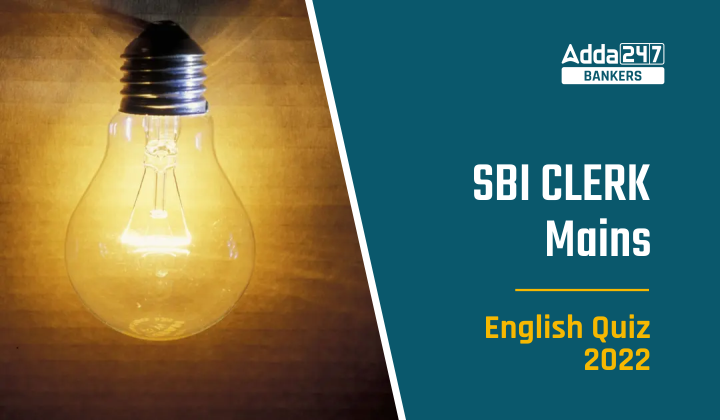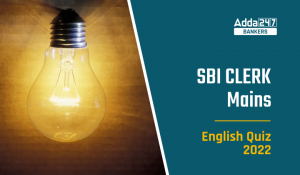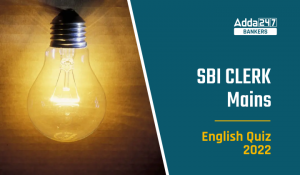Directions (1-10): In the following passage there are words highlighted in bold, each of which has been numbered. These numbers are printed below the passage and against each, four words are suggested, one of which fits the blank appropriately. Find out the appropriate word in each case. If the word highlighted in bold does not require any replacement, choose (e) as your answer.
Only those who deem gung-ho belligerence (1) a fashion statement will be impressed by India being projected as the world’s largest importer of military equipment: estimating (2) for 13 per cent of the international arms trade, as calculated by the respected think-tank, the Stockholm International Peace Research Institute. Perhaps some politicians owing enmity (3) to the ruling NDA will tom-tom the $21.95 billion imports over 2012-2016 as evidence of the government’s determination to undermine (4) military muscle in keeping with the commitment to national security, and use the SIPRI findings to counter the criticism of only a core (5) hike in the defence outlays proposed in the recent budget.
While the Swedish institute has remained friendly (6) from the Indian “debate”, it has made one very damning point — a key reason for the huge import bill is because “the Indian arms industry has largely failed to produce competitive indigenously designed weapons”. And before the chorus(7) singing of the NDA government’s praises gets hyper-active, the SIPRI study notes that the “make in India drive” had yet to result in any technology build-up. The same noted that China was increasingly able to move (8) arms imports with domestic products. For the record, China was the fourth largest importer, and Pakistan was placed seventh on the list.
The SIPRI observation confirms that a virtual non-starter was the plan announced by Prime Minister PV NarasimhaRao in the early 1990s to reverse (9) the trend of the Indian military being outfitted (10) in a 70-30 per cent ratio of imported and indigenous equipment.
Q1. (a)Rancor
(b)Harshness
(c)Malice
(d)Slander
(e)No correction required
Q2. (a)Accounting
(b)Calculating
(c)Summing
(d)Assigning
(e)No correction required
Q3. (a)Devotion
(b)Integrity
(c)Allegiance
(d)Adoration
(e)No correction required
Q4. (a)Condense
(b)Affix
(c)Enrich
(d)Augment
(e)No correction required
Q5. (a)Indefinite
(b)Marginal
(c)Slender
(d)Nullified
(e)No correction required
Q6. (a)Aloof
(b)Concerned
(c)Isolated
(d)Derisive
(e)No correction required
Q7. (a)Concert
(b)Hymn
(c)Accord
(d)Band
(e)No correction required
Q8. (a)Rotate
(b)Vacillate
(c)Shift
(d)Substitute
(e)No correction required
Q9. (a)Switch
(b)Negate
(c)Abolish
(d)Change
(e)No correction required
Q10. (a)Designed
(b)Equipped
(c)Suited
(d)Tested
(e)No correction corrected
Directions (11-15): Read each sentence to find out whether there is any grammatical error or idiomatic error in it. The error, if any, will be in one part of the sentence. The number of that part is the answer. If there is no error, the answer is (e). (Ignore errors of punctuation, if any)
Q11. The youth (a)/ did not dare (b)/ to venture with the sea (c)/ as it was a high tide. (d)/ No error. (e)
Q12. A young sales manager (a)/ who is about to resign his job (b)/ despite his success (c)/ in the organization. (d)/ No error (e)
Q13. The difference between successful person (a)/ and others is not (b)/ a lack of knowledge (c)/ but a lack of will. (d)/ No error (e)
Q14. After my interview (a)/ by the selection panel (b)/ I was waiting for a response (c)/ but they did not revert back. (d)/ No error (e)
Q15. The teacher uses anecdotes (a)/ to help her students (b)/ relate better (c)/ to the subjects being taught in the class. (d)/ No error. (e)
SOLUTIONS
S1. Ans. (e)
Sol. Belligerence means aggressive or warlike behaviour.
S2. Ans. (a)
Sol. Accounting means considering or regarding in a specified way.
S3. Ans. (c)
Sol. Allegiance means loyalty or commitment to a superior or to a group or cause.
S4. Ans. (d)
Sol. Augment means make (something) greater by adding to it; increase.
S5. Ans. (b)
Sol. Marginal means minor and not important; not central.
S6. Ans. (a)
Sol. Aloof means conspicuously uninvolved.
S7. Ans. (e)
Sol. Chorus means a simultaneous utterance of something by many people.
S8. Ans. (d)
Sol. Substitute means use or add in place of.
S9. Ans. (e)
Sol. Reverse means make (something) the opposite of what it was.
S10. Ans. (b)
Sol. Equipped means supply with the necessary items for a particular purpose.
S11. Ans. (c)
Sol. Substitute ‘into’ in place of ‘with’.
S12. Ans. (b)
Sol. Remove ‘who’ from the sentence.
S13. Ans. (a)
Sol. Use article ‘a’ before ‘successful person’ because person is a countable noun and ‘successful persons’ can also be used to make the sentence correct.
S14. Ans. (d)
Sol. Remove ‘back’ after ‘revert’.
S15. Ans. (e)
Sol. No error.



 English Quizzes For SBI Clerk Mains 2022...
English Quizzes For SBI Clerk Mains 2022...
 English Quizzes For SBI Clerk Mains 2022...
English Quizzes For SBI Clerk Mains 2022...
 English Quizzes For SBI Clerk Mains 2022...
English Quizzes For SBI Clerk Mains 2022...








